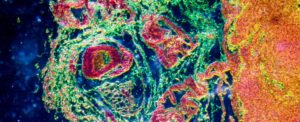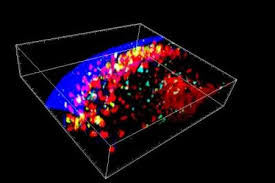
Researchers Discover New ‘Micro-organ’ Inside The Immune System
According to a recent study published in the journal Nature Communications, Scientists have unveiled a new “micro-organ” present within the immune system.

The study says that a structure is present in the body “remembers” past infections and vaccinations done to it and is filled with many kinds of immune cells which respond to pathogens that the body has experienced before. The study was done by researchers at Australia’s Garvan Institute of Medical Research who were responsible for the identification of the structure.
According to the researchers, the structure is strategically positioned for early detection of infections. The crucial discovery was possible only when the team working on it utilized an advanced imaging technique, which is popularly known as 3D microscopy, so that they can create “movies” of the immune system in action in live animals.

There was a knowledge earlier about how humans are often left with some immunity after they are exposed to an infection. But, despite all these researches, some questions still remain regarding how all this process works exactly.
The discovered structure is thin, flat and only appears when living animals are infected with such an infection which the body has never seen before. The structure is seen extending over lymph nodes. The structures were named SPFs – or “subcapsular proliferative foci” – and they were detected in both humans as well as mice.
When microscopy techniques were used by the team to be able to view SPFs inside the body, they witnessed several different types of immune cells which included “memory B Cells” which has the information inside it about what’s the best way to attack infections.
The most important thing the researchers observed was that the memory B cells were changing into plasma cells which convert antibodies that can itself fend off pathogens.
“It was exciting to see the memory B cells being activated and clustering in this new structure that had never been seen before,” Imogen Moran, first author of the study from Garvan, said in a statement. “We could see them moving around, interacting with all these other immune cells and turning into plasma cells before our eyes.”
Moreover, the specific location of the SPF structures was also seen to be best suited to fight infection, as per the Tri Phan, who was the head of the research.
“Now, we’ve shown that memory B cells rapidly turn into large numbers of plasma cells in the SPF,” Phan said. “The SPF is located strategically where bacteria would re-enter the body and it has all the ingredients assembled in one place to make antibodies—so it’s remarkably well engineered to fight reinfection fast.”
The reason why such structures were never identified earlier to that, according to researchers, is that there were no traditional microscopy techniques which enable only to look at thin 2D sections of tissue. This all procedure makes it had to detect SPFs which are very thin and not present every time.
“So, this is a structure that’s been there all along, but no one’s actually seen it yet, because they haven’t had the right tools,” Phan said. “It’s a remarkable reminder that there are still mysteries hidden within the body—even though we scientists have been looking at the body’s tissues through the microscope for over 300 years.”
The fresh research results could provide a better understanding for scientists to develop more effective vaccines, researchers said.
You May Also Read: Railways Decide To Come Up With More AC 3 Tier Coaches In Place Of AC 2 Tiers In Premium Trains